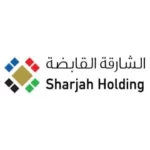The Emirate of Ajman joined the United Arab Emirates in 1971, representing the smallest emirate, constituting 0.3% of the total UAE area, excluding islands. According to the latest population statistics from 2017, it has a population of 504,846, ranking fourth in population density in the UAE.
The city, sharing the same name, serves as the government headquarters housing most government offices, institutions, and major companies, including real estate development firms. Surrounded by other emirates, it borders Sharjah to the east, north, and south, directly located on the coast of the Arabian Gulf. It includes two adjacent regions, Masfout and Manama, both entirely agricultural.
Established in 1775 by the Al Nuaim tribe, Ajman has focused on enhancing its tourism sector due to its natural beauty, attracting visitors worldwide. The leadership has invested significantly in infrastructure and essential facilities to elevate its status.
Ajman's History
Historical documents state that Ajman was founded in 1775 by the Al Nuaim tribe. Initially engaged in pearl and fish harvesting, the region underwent negotiations with the United Kingdom, leading to the Treaty of Perpetual Peace, declaring Ajman an independent territory after British withdrawal.
Naming of Ajman
Contrary to common pronunciation, Ajman was originally called 'Aiman.' The name change was influenced by the presence of Persian horses in the region, a result of the Arab-Persian wars. Locals pronounce it as 'Aiman.'
Geographical Facts about Ajman
Geology: Ajman features a desert landscape with sandy plains, a coastal strip along the Arabian Gulf, and high mountains rich in chromium and magnesium.
Climate: Ajman experiences a moderate climate year-round due to the influence of mountains, with a dry tropical desert climate, making its atmosphere consistently sunny.
Regions in Ajman:
- Capital - Ajman City: The government's hub and a center for major institutions, industries, and a strategic port on the Arabian Gulf.
- Masfout: Located 110 square kilometers away from Ajman, it boasts fertile lands, suitable for diverse agriculture, and scenic mountains, including Mount Leshen and Mount Dafta.
- Manama: Situated between Ajman, Fujairah, and Sharjah, Manama features a vast plain with rich minerals like chromium and magnesium, along with diverse agriculture.
Tourist Attractions in Ajman
Al Muwaihat: An archaeological area discovered in 1986, revealing ancient structures, burial sites from the Umm Al-Nar period.
Al Zorah Nature Reserve: North of Ajman, part of the Al Zorah residential complex, this reserve covers over a million square meters, hosting a variety of flora and fauna, making it a popular attraction.
Ajman, with its historical sites, natural beauty, and commitment to environmental preservation, stands out as a diverse and appealing destination for tourists and locals alike.
Bahrain Museum in the Emirate of Ajman
The Bahrain Museum, also known as Murair Fort, is located in the Manama area, 70 kilometers away from the emirate. In the distant past, this fort symbolized the military presence during the era of Sheikh Rashid bin Hameed Al Nuaimi. The museum includes a well, a guard tower, and seven large rooms exhibiting mostly local artifacts, showcasing traditional architecture in the Emirates and authentic Arab heritage, including weapons from ancient times.
Al Murabba Area
One of the most beautiful oases in the heart of the desert, surrounded by dunes and suitable for the hobby of riding purebred Arabian horses. Established in 2002 by the order of Sheikh Ammar bin Hameed Al Nuaimi, the Crown Prince of Ajman, the stable features traditional designs reflecting the region's cultural richness. Tourists from around the world visit this area for horse riding, training, and international equestrian events hosted by the stable.
Education Focus in the Emirate of Ajman
The emirate places great emphasis on education and educational institutions, considering it a fundamental pillar for progress. To achieve this, the emirate has significantly expanded the number of educational entities and schools. There are over 42 government schools and 21 private schools, catering to both genders, with mixed-gender schools providing distinguished educational services to over 75,000 students. it is also home to prestigious institutions such as Ajman University and Preston University.
Stages of Education Development in Ajman
Since 1988, Ajman has been dedicated to developing its education sector. Sheikh Humaid issued a decree to establish Ajman University of Science and Technology, which gained international recognition as an educational institution offering high-quality degrees. The university offers over 21 majors, including humanities, technology, science, and social sciences. It has expanded to include new disciplines such as engineering, decoration, pharmacy, public relations, modern technological techniques, and herbal medicine.
Health Services
The emirate has shown a special interest in the healthcare sector, experiencing significant recent growth. Sheikh Khalifa bin Zayed Hospital, one of the latest medical facilities in the emirate, is equipped with modern facilities and experienced staff. The Kuwaiti Hospital and GMC Hospital, affiliated with Gulf Medical University, contribute to healthcare excellence. The emirate has seven international health institutions, 49 private clinics, and over 74 commercial units hosting pharmacies.
Economy of Ajman
In recent years, Ajman has witnessed significant economic growth, ranking third among the seven emirates in terms of industrial development. It is renowned for having the largest ship repair yard globally, driving substantial economic growth. The emirate's investment sector has flourished, focusing on rapid growth through residential, commercial, and administrative projects. The leadership's attention to industry is evident with the establishment of over 550 industrial facilities.
Real estate investment has thrived in Ajman, becoming an economic revolution within the emirate. The emirate has seen substantial growth and development in this sector, surpassing expectations. Agricultural activity has also played a role in rapid economic development, with extensive cultivated lands and exceptional animal wealth. As of 2005, the emirate's total fishery production exceeded three thousand tons, with hundreds of specialized fishing boats and ships.


















